
Review on SanDisk 16GB 60MB/s Extreme Compact Flash Card SDCFX-016G-A61: Reliable Storage Solution for High-Speed Data Transfer (US Retail Package) by Juan Huerta

Best SanDisk I've ever used
I started the Ultra II series in 2005 and have been selling them and updating them as needed. I'm currently using a Canon 5D Mark II with HD video (I think we all already know that), but the camera also creates a 30MB RAW file every time I click the shutter button. So the writing speed is very important. I used Extreme IV series cards (45MB/s) and even at the slower 4fps in the 5D2 the camera hung after a few shots to write data. With these new 16GB Extreme cards I can now hold the shutter button down and take MUCH more pictures before the buffer starts to hold them. What an improvement! This new series is worth every dollar. Keep in mind that faster cards also increase battery life as data is written faster, so that's another plus of these new Extreme cards. It's UDMA level 5, which is good (5D2 handles up to 6). Incidentally, UDMA simply means that the card handles most of the file processing, which increases write speeds. Cards other than UDMA force the camera to do all the work of writing images to the card. If you have a UDMA-enabled camera, be sure to buy UDMA-enabled cards. One last thing to clear up the confusion about the card's naming format: 133X and 300X all just mean the speed at which the card can write data. SanDisk doesn't use that in their marketing, they usually say "30MB/s" or "60MB/s". Lexar consistently uses the ###X format. So please consider the following when purchasing: SanDisk Ultra II: 15 MB/s (original version) - Lexar calls it 100X (This old SanDisk model does not support UDMA) SanDisk Ultra II: 20 MB/s (upgrade) - Lexar calls it 133X ( this older SanDisk model doesn't support UDMA) (Thanks to Uri for correcting me in the comments!) SanDisk Extreme III: 20 MB/s (original version) - Lexar calls it 133X (this older SanDisk model doesn't support UDMA). ) SanDisk Extreme III: 30 MB/s (updated) - Lexar calls it 200X (This discontinued SanDisk model supports UDMA) (Thanks to David for correcting the comments!) SanDisk Extreme IV: 45 MB/s - Lexar calls it 300X (The discontinued SanDisk Ducati lineup is also 45MB/s and supports UDMA) SanDisk's New Extreme: 60MB/s - Lexar calls it 400XSanDisk New Extreme Pro: TRUE 90MB/s read and write - Lexar calls it 600X I hope , which helps to understand everything! UPDATE (12/29/2009): I also wanted to mention that since 2005 I have owned almost 15 CF cards from SanDisk and never a single one has failed. A trick I learned from a pro is that after COPYING (instead of MOVING) your pictures to your computer, always format the card IN THE CAMERA before taking a new picture. Do not use Windows to remove pictures from the card. CF cards get grumpy for some reason (no matter what brand you use). I took 20,000 pictures with four different cameras and in four years the card has never failed. UPDATE (3/30/2011): My two 16 GB memory cards are still my workhorse, in use almost every day, not a single failure. This range of 60MB/s cards probably offers the best value, you get speed, reliability and storage for little money (ha, you'd think I work for SanDisk lol! Just a happy customer.) UPDATE (7-12-2011): I did it. I bought a red/gold SanDisk Extreme Pro CF 32GB - UDMA 90MB/s 600x memory card (SDCFXP-032G-A91, US retail box). Wow, the writing and copying speed is even faster, just amazing. This has been my main card for the past few months. But to be honest, the Extreme red and black cards tested here are fast enough (even for video) and MUCH cheaper. As always, SanDisk cards are stable. Again, make sure you COPY from the card to your computer and never delete images from the card using your PC. Then format your IN-CAMERA card before each new use and your cards will work and last a very long time. I know I already wrote this in my first update, I can't stress this enough! UPDATE (8/7/2012): Another year and over 10,000 more recordings, including a wedding two weeks ago, and CF SanDisk is still running at 100%, ZERO errors. They're stress tested between photos and videos on my 5D2, and sometimes it gets so hot here in Phoenix that the camera actually freezes from overheating, but the cards don't fail. Even if someone did this at the moment, it doesn't matter, I've been a SanDisk user for a long time. In fact, my editing computer is now running a SanDisk Extreme SSD 120GB SATA 6.0GB 2.5-inch SDSSDX-120G-G25. Sorry if this sounds like an ad, I REALLY don't work for them lol! I just appreciate quality stuff. UPDATE 5/7/2013: Only new Lexar 1000x cards are faster than SanDisk Extreme Pro! The new Lexar 800x series cards can READ fast, but the write speed is MUCH slower than the SanDisk Extreme. That's why they're half the price of 1000x. The 1000X is really fast, I use a few in my 5D Mark III and when combined with UDMA 7 we're talking 29 RAW frames at 6 fps before the buffer kicks in. BUT you will NOT see this speed in previous models. that are not UDMA 7. So SanDisk is still the fastest in slightly older cameras like the 5D Mark II. 5D Mark III owners also take note: the Lexar 1000X screams at 140MB/s in the 5D3, but only with 32GB and 64GB -Cards! 16GB is 95MB/s, which is the same as SanDisk. Strange right? The Lexar line is quirky, you should know what you're getting. SanDisk is tested and true, and when they say 90MB/s, they mean exactly that for both read and write speeds. Note: Your Extreme II SSD on my PC is REALLY fast. ;-)
- New to my collection
- ---
New products
Comments (0)
Top products in 🎴 Memory Cards

Smartphone Xiaomi Mi 8 Lite 6/128 GB, midnight black

70 Review
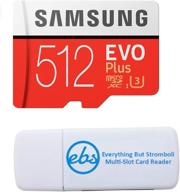
💽 512GB Samsung Evo Plus Micro SDXC Memory Card

40 Review
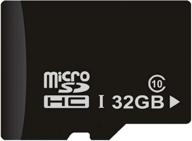
32GB High-Speed Micro SDHC Card - Class 10 UHS-I Compatible Memory Card for SD Devices

63 Review
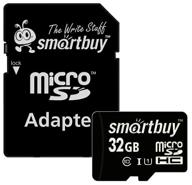
SmartBuy Classic Series microSDHC 32 GB Class 10, R/W 25/30 MB/s, SD adapter

41 Review
Another interesting products
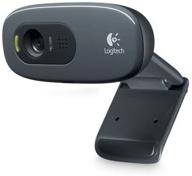
🎥 Logitech C270 Webcam: Crystal Clear Video and Superior Quality

183 Review
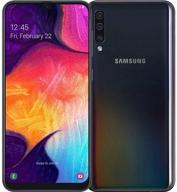
Smartphone Samsung Galaxy A50 4/64 GB, 2 SIM, black

82 Review
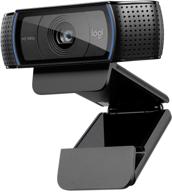
💻 Get Amazing Video Quality with Logitech HD Pro Webcam C920 (Discontinued Edition)

83 Review
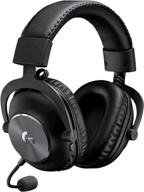
Renewed Logitech G PRO X Wireless Lightspeed Gaming Headset with Blue VO!CE Mic Filter for Immersive Gaming Experience

122 Review

